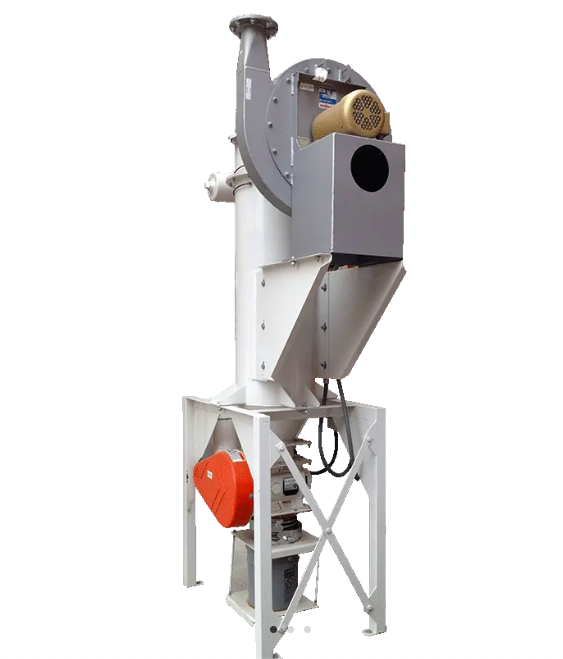Dust collection has become a big topic for brewers recently because of new National Fire Protection Association (NFPA) standards. So, if you’re wondering why your city is suddenly requiring it and what your options are, here are the main things you need to know.
- The Explosive Nature of Grain Dust
When grain is milled, its surface area increases exponentially, making it highly combustible and potentially explosive. Depending on which grain, and moisture content, this will be at different points. This risk is more significant for distillers using hammer mills, but breweries using roller mills are also at risk. Though this danger is pretty nominal for brewers, a few incidents have led to stricter regulations, as reflected in the updated National Fire Prevention Act (NFPA 68), aimed at preventing dust-related incidents.
- Benefits Beyond Safety
While dust collection is crucial for explosion prevention, it also offers numerous other benefits. These include improving health by reducing respiratory load and allergic reactions to grain dust, enhancing operational efficiency by minimizing cleanup needs, reducing slip risk, avoiding contamination of finished product, and preventing pest infestations by removing dust that can serve as a food source. This is often a driving benefit because once you get pests, it’s a long journey to get rid of them.
- Dust Collector Options
With the few exceptions of very large breweries like Coors, every brewer (or distiller) will only need to choose between two sizes of dust collectors. The smaller units should be just small enough to accommodate virtually any space without a silo and will slide under the volume threshold where explosion mitigation features become mandatory. If it’s a unique system with an unusual number of bulk bag unloaders, for example, a smaller unit will still work simply by using a bigger blower. The smaller units will always use cartridges to maximize filtration area and reduce the filter changes.
Larger units become necessary only when silos are present because the dust collection chamber needs to be large enough to accept the blowback from the filling trucks. Again, any unit large enough to accommodate a silo’s blowback will fit virtually any brewery regardless of the number of silos because you’re only filling one at a time. The larger units will always use bags because filtration area is not a concern, and the use of bags will further space out filter changes.
Almost any model will have the option to be top-loading, which is always advisable unless headroom prevents it. It may seem like it’s not a big deal; besides, you only change filters once every few years! But to get up in a dust collector you have to either hold your breath or use a really big snorkel. And you get absolutely caked in dust.
There are numerous options available for the dust collectors used for breweries including:
- Bucket-style discharge
- Pulse jet timer for filter cleaning
- Differential pressure magnehelic gauge kit
- Painted carbon steel or stainless-steel construction
- Hinged door with T-handle (toolless) entry
- High or low-entry inlet
- Explosion mitigation panels or gates
In addition to several commercial providers, such as ABM Equipment, Sternvent, Rockler, and Oneida, depending on the size and scale of your dust collection needs, readily available wood-shop collectors can also be used, provided they can handle the capacity. Regardless of the system chosen, it is encouraged to include redundancy systems so the mill can not be operated with the dust collector being on.
- Configuration Options
Whole-Room Negative Pressure
This method is ideal for breweries with contained mill rooms. It involves installing vents in the mill-room ceiling to draw air from and create negative pressure inside the entire space. This approach is more effective as the room gets smaller.
Dust Ports on Equipment
For breweries that prefer not to alter the room’s air, have grain equipment scattered throughout the space, or simply don’t have space for a mill room, dust ports can be connected to an external dust collector. Ducting can then be run through the facility to each port, pulling vacuum on each piece of equipment to manage dust effectively. This setup will require a bigger draw, but it’s not all bad because it will also cut down on dust in general.
Hybrid
Sometimes you can’t fit all your dust-creating equipment in one room, or a piece of equipment will have a dust port but the airflow inside the unit won’t make good use of it. There can be a number of different scenarios that justify using negative pressure on a room as well as pieces of equipment.
Conclusion
Implementing a dust collection system in your brewery or distillery is essential for explosion prevention, health and safety, pest prevention, operational efficiency, and compliance with safety standards. By understanding and utilizing the appropriate dust collection methods and equipment, you can create a safer, cleaner, and more efficient brewing environment.
Article provided by: John Hilgendorf of ABM Equipment









